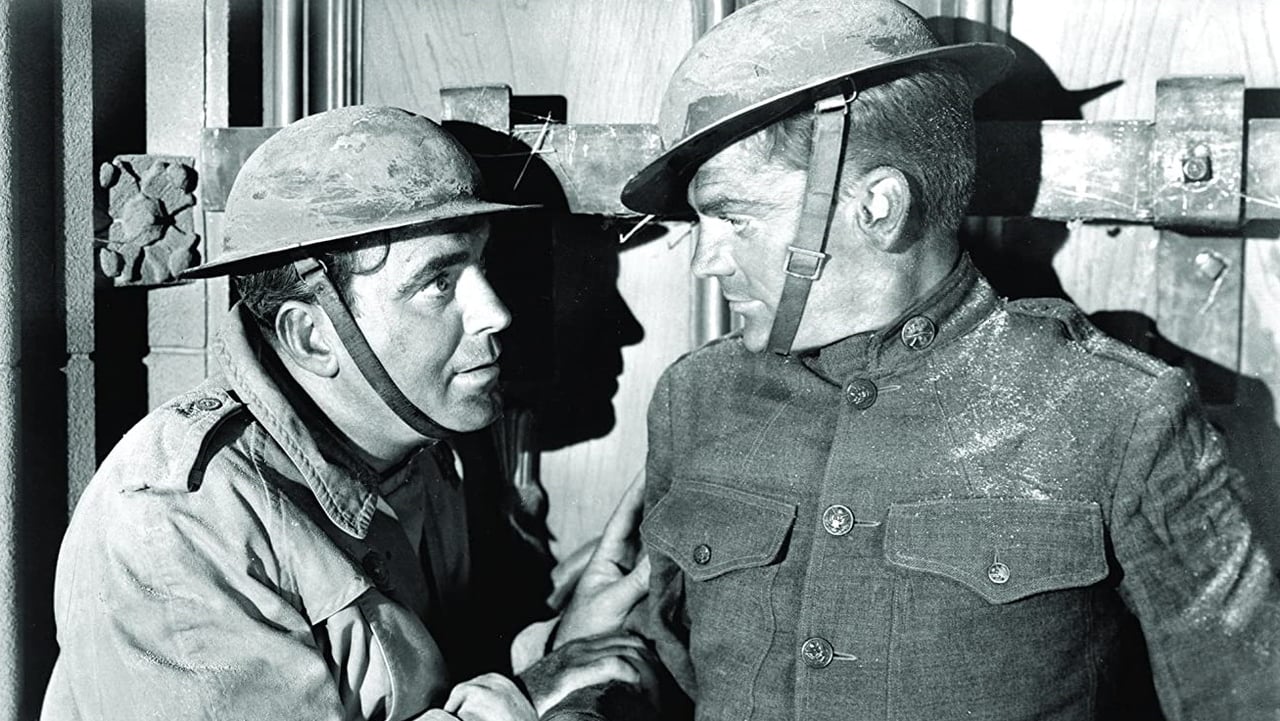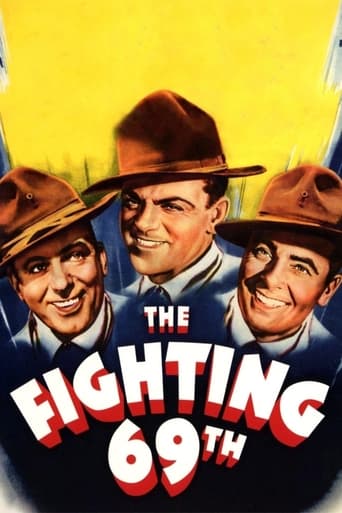

Mercifully I've spent my whole life in sublime ignorance of this piece of cheese though I am inclined to curse the day - last week - when I spotted it in a Charity shop and bought if for a pittance on the strength of names like George Brent, Alan Hale, William Keighly not to mention that threadbare vaudeville act Cagney and O'Brien.What a crock. There was barely one frame that was watchable. Talk about the mixture as before. William Keighly may have been a journeyman director but he was on some fairly tasty movies not least Each Dawn I Die which was right before this one and he shared a director credit (though I wish someone would explain why) with Michael Curtiz on THE version of Robin Hood (the one with Errol Flynn that they STILL can't equal seventy years later). Clearly he phoned this one in as did virtually everyone connected with it. Pure banjo pics.
... View MoreHollywood released quite a few films with the Pat O'Brien, Jimmy Cagney pairing with the same general theme, one which I think is unfairly dismissed here as 'cliched'.In each of these films, Cagney's character was an Irish ghetto hood, full of street values (toughness at all costs... taking, lying, and using ... physical aggressiveness ... resistance to authority or discipline ... contempt for 'chump' 'soft' moral values). He saw Pat O'Brien's character as 'soft' because he was a 'sucker' with all his 'morality' talk.The redemption came when Cagney's character contrasted Father Duffy's steady courage under fire with his own terror. His street values taught him to respect courage. But he saw that his street values can teach him defiance but not serenity. Serenity comes from moral character and the street cannot teach you that. He saw that there is, as the song goes, more to being a man than just being macho. And there is a courage that has nothing to do with your fists. That is a very, very important point.
... View MoreThis is a remarkable movie, though you might not guess it from the credits. I don't know what George Brent was doing in movies; he certainly couldn't act, and that is painfully obvious here. But Cagney gives a superlative performance, once again going out on a limb, this time by playing a coward. And while he does finally find some courage, he is not rewarded with love and kisses; he dies. In short, it would be hard to imagine Hollywood making a movie like this today, but it is most definitely worth seeing. Sometimes the speeches get a little preachy, but all the sentiments are good ones, and as a realistic study of the difficulties of dealing with the horrors of war, this is one remarkable movie, for any time. A great script and and some first-rate acting.
... View MoreRecent American moviegoers who saw Martin Scorsese's great film, The Gangs of New York would probably think that the Civil War Draft Riots represented the unanimous Irish opinion on the American Civil War. Far from it and the regiment known as the 69th New York won honor and glory for itself in the Civil War.The Spanish American War was over before it saw any action, but that was certainly made up for in World War I. The Fighting 69th as this film was called did the stuff legends are made of and a few personal legends came out of that conflict.In the years 1938-1941 Hollywood turned out a whole load of patriotic type films. Either about past American wars or about military preparedness for the war to come, these flicks weren't deep or subtle. But they were great entertainment.The Fighting 69th is based on two real American heroes, William J. Donovan and Father Francis P. Duffy, played by George Brent and Pat O'Brien and a fictional one named Jerry Plunkett played by James Cagney. William J. Donovan (Will Bill as he was known)among other awards won the Congressional Medal of Honor. He had a distinguished career in the Harding-Coolidge Justice Department and also ran for Governor of New York in 1932, a bad year for Republicans which Donovan was. After this film was made, FDR appointed Donovan to head the Office of Strategic Services, our American intelligence service in World War II and the forerunner of the Central Intelligence Agency. His biography would be a great film, maybe someone will do it one day.When Father Francis P. Duffy died in 1932, he was one of New York's beloved figures by all faiths. He was the chaplain of the regiment, having been so since the Spanish American War. During World War II, he never stayed behind the lines, he traveled with a combat medical unit and went where the fighting was the thickest. The closest person we've had to him recently was Father Mychal Judge of the NYC Fire Department who accompanied the firemen into the burning World Trade Center on 9/11/01. A couple of Catholic priests who walked the walk were Duffy and Judge.After the war Duffy became pastor of the "Actor's church" on West 42nd Street in Hell's Kitchen, but near the theater district. When he passed on, a statue of him still there today was put in the triangle opposite Times Square. And that triangle was renamed Duffy Square.Both Donovan and Duffy figure prominently in Cagney's story in The Fighting 69th. For the first half Cagney is his usual streetwise, cocky urban self. The second half of the film as he's brought to the realities of war reveal a different Plunkett. It's also a great test of what a fabulous player James Cagney was, to show the change in Plunkett's character. The main story line is what happens to Cagney in the film and he's brilliant.If anyone is looking for a film about the causes of and how America got into World War I, this ain't the film. Some in current audiences will find it flag waving and super-patriotic and it sure is. But it's well acted flag waving.One of these days someone may do a film that concentrates solely on the careers of either Donovan or Duffy. Hopefully soon.
... View More